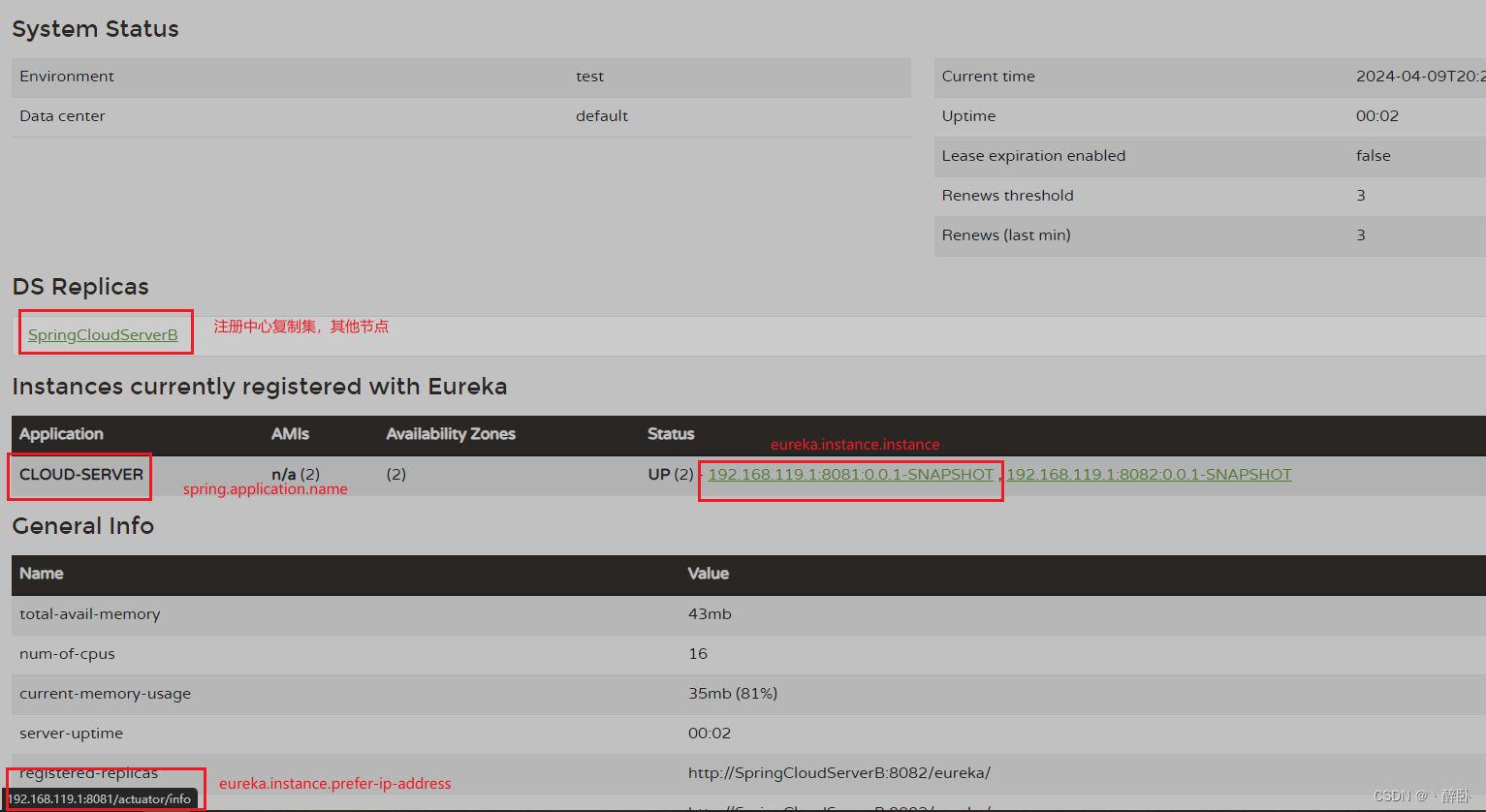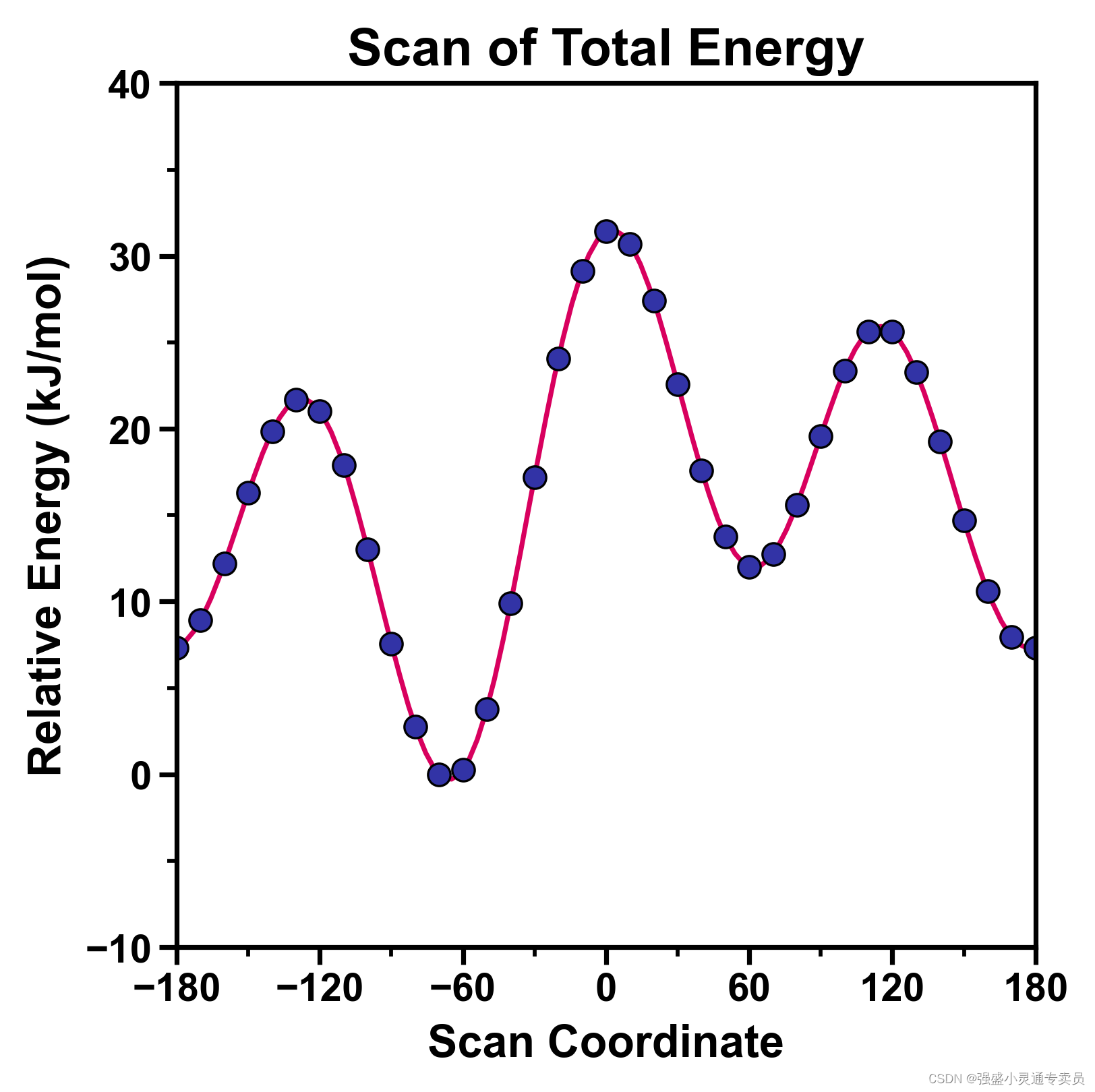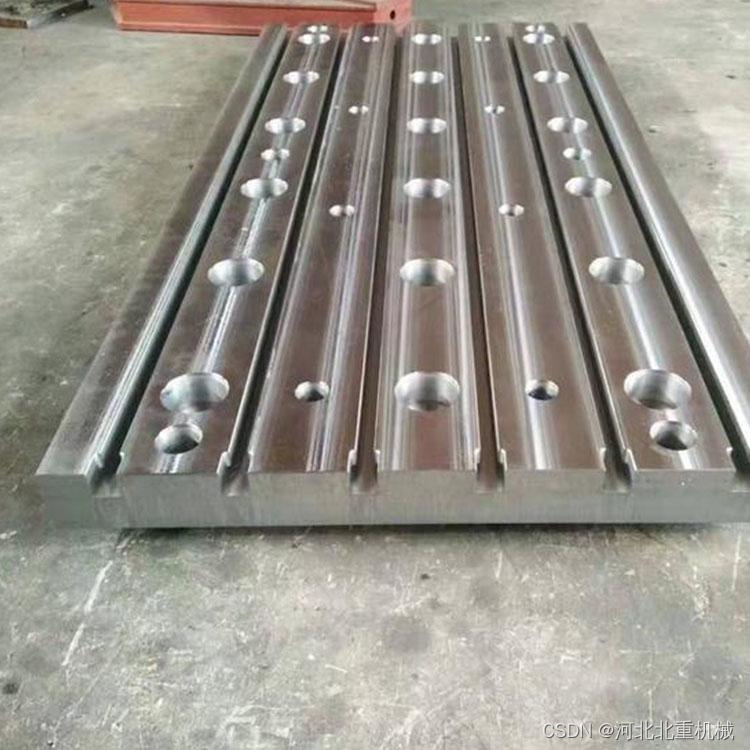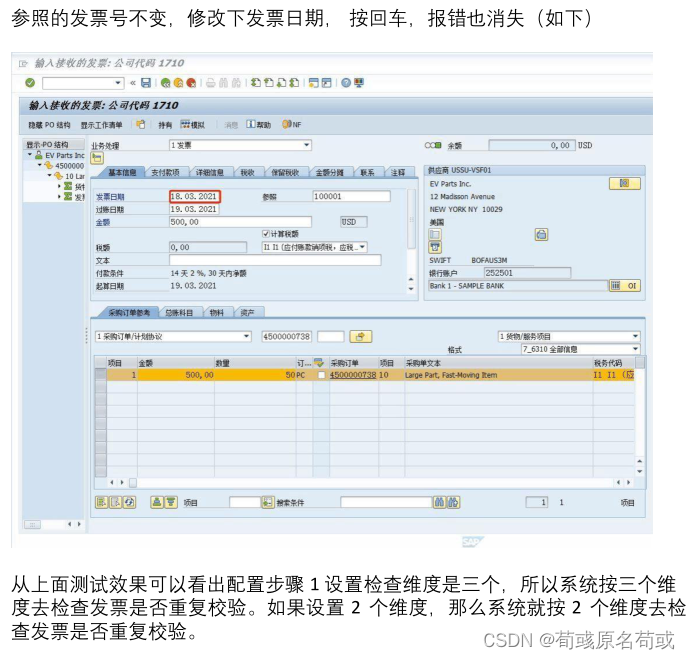我们考虑如下形式的双调和方程的数值解

其中,Ω是欧氏空间中的多边形或多面体域,在其中,d为维度,具有分段利普希茨边界,满足内部锥条件,f(x) ∈ L2(Ω)是给定的函数,∆是标准的拉普拉斯算子。算子∆u(x)和∆2u(x)表示为

巧妙地将双调和方程(1.1)分解为两个Possion方程,传统的数值方法如有限元法(FEM)和有限差分法(FDM)在计算资源和时间复杂度较小的情况下表现良好。通过引入辅助变量w = −∆u,可以将四阶方程(1.1)重写为一对二阶方程:

或者引入变量w = ∆u,得到

那么,我们的目标为寻找一对函数(w,u),而不是找到原始问题(1.1)的解。如下我们以g=0和h=0为例,利用五点中心差分求解上面的双调和方程。
%%%%%%%%%%%%%%%%%%%%%%%%%%%%%%%%%%%%%%%%%%%%%%%%%%%%%%%%%%%%%
%%%% Matrix method for Biharmonic Equation %%%%
%%% u_{xxxx} + u_{yyyy} + 2*u_{xx}*u_{yy} = f(x, y) %%%%
%%% Omega = 0 < x < 1, 0 < y < 1 %%%%
%%% u(x, y) = 0 on boundary, %%%%
%%% Exact soln: u(x, y) = sin(pi*x)*sin(pi*y) %%%%
%%% Here f(x, y) = 4*pi^4*sin(pi*x)*sin(pi*y); %%%%
%%% Course: Ye Xiao Lan on 04.01 2024 %%%%
%%%%%%%%%%%%%%%%%%%%%%%%%%%%%%%%%%%%%%%%%%%%%%%%%%%%%%%%%%%%%
clear all
clc
close all
ftsz = 20;
x_l = -1.0;
x_r = 1.0;
y_b = -1.0;
y_t = 1.0;
q = 6;
Num = 2^q+1;
NNN = Num*Num;
point_num2x = Num;
point_num2y = Num;
fside = @(x, y) 4*pi^4*sin(pi*x).*sin(pi*y);
utrue = @(x, y) sin(pi*x).*sin(pi*y);
hx = (x_r-x_l)/point_num2x;
X = zeros(point_num2x-1,1);
for i=1:point_num2x-1
X(i) = x_l+i*hx;
end
hy = (y_t-y_b)/point_num2y;
Y=zeros(point_num2y-1,1);
for i=1:point_num2y-1
Y(i) = y_b+i*hy;
end
[meshX, meshY] = meshgrid(X, Y);
tic;
Unumberi = FDM2Biharmonic_Couple2Navier_Zero(point_num2x, point_num2y,...
x_l, x_r, y_b, y_t, fside);
fprintf('%s%s%s\n','运行时间:',toc,'s')
U_exact = utrue(meshX, meshY);
meshErr = abs(U_exact - Unumberi);
rel_err = sum(sum(meshErr))/sum(sum(abs(U_exact)));
fprintf('%s%s\n','相对误差:',rel_err)
figure('name','Exact')
axis tight;
h = surf(meshX, meshY, U_exact','Edgecolor', 'none');
hold on
title('Exact Solu')
% xlabel('$x$', 'Fontsize', 20, 'Interpreter', 'latex')
% ylabel('$y$', 'Fontsize', 20, 'Interpreter', 'latex')
% zlabel('$Error$', 'Fontsize', 20, 'Interpreter', 'latex')
hold on
set(gca, 'XMinortick', 'off', 'YMinorTick', 'off', 'Fontsize', ftsz);
set(gcf, 'Renderer', 'zbuffer');
hold on
% colorbar;
% caxis([0 0.00012])
hold on
figure('name','Absolute Error')
axis tight;
h = surf(meshX, meshY, meshErr','Edgecolor', 'none');
hold on
title('Absolute Error')
% xlabel('$x$', 'Fontsize', 20, 'Interpreter', 'latex')
% ylabel('$y$', 'Fontsize', 20, 'Interpreter', 'latex')
% zlabel('$Error$', 'Fontsize', 20, 'Interpreter', 'latex')
hold on
set(gca, 'XMinortick', 'off', 'YMinorTick', 'off', 'Fontsize', ftsz);
set(gcf, 'Renderer', 'zbuffer');
hold on
% colorbar;
% caxis([0 0.00012])
hold on
if q==6
txt2result = 'result2fdm_mesh6.txt';
elseif q==7
txt2result = 'result2fdm_mesh7.txt';
elseif q==8
txt2result = 'result2fdm_mesh8.txt';
elseif q==9
txt2result = 'result2fdm_mesh9.txt';
end
fop = fopen(txt2result, 'wt');
fprintf(fop,'%s%s%s\n','运行时间:',toc,'s');
fprintf(fop,'%s%d\n','内部网格点数目:',Num-1);
fprintf(fop,'%s%s\n','相对误差:',rel_err);
被调用的求解函数如下:
function Uapp = FDM2Biharmonic_Couple2Navier_Zero(Nx, Ny, xleft, xright, ybottom, ytop, fside)
format long;
% Define the step sizes and create the grid without boundary points
hx = (xright-xleft)/Nx;
x = zeros(Nx-1,1);
for ix=1:Nx-1
x(ix) = xleft+ix*hx;
end
hy = (ytop-ybottom)/Ny;
y=zeros(Ny-1,1);
for iy=1:Ny-1
y(iy) = ybottom+iy*hy;
end
% Define the source term
source_term = fside;
% Initialize the coefficient matrix A and the right-hand side vector F
N = (Ny-1)*(Nx-1);
A = sparse(N,N);
FV = zeros(N,1);
% Loop through each inner grid point, Apply finite difference scheme (central differences)
hx1 = hx*hx;
hy1 = hy*hy;
for jv = 1:Ny-1
for iv=1:Nx-1
kv = iv + (jv-1)*(Nx-1);
FV(kv) = fside(x(iv),y(jv));
A(kv,kv) = -2/hx1 -2/hy1;
%-- x direction --------------
if iv == 1
A(kv,kv+1) = 1/hx1;
else
if iv==Nx-1
A(kv,kv-1) = 1/hx1;
else
A(kv,kv-1) = 1/hx1;
A(kv,kv+1) = 1/hx1;
end
end
%-- y direction --------------
if jv == 1
A(kv,kv+Nx-1) = 1/hy1;
else
if jv==Ny-1
A(kv,kv-(Nx-1)) = 1/hy1;
else
A(kv,kv-(Nx-1)) = 1/hy1;
A(kv,kv+Nx-1) = 1/hy1;
end
end
end
end
V = A\FV;
B = sparse(N,N);
FU = zeros(N,1);
% Loop through each inner grid point, Apply finite difference scheme (central differences)
for ju = 1:Ny-1
for iu=1:Nx-1
ku = iu + (ju-1)*(Nx-1);
FV(ku) = V(ku);
B(ku,ku) = -2/hx1 -2/hy1;
%-- x direction --------------
if iu == 1
B(ku,ku+1) = 1/hx1;
else
if iu==Nx-1
B(ku,ku-1) = 1/hx1;
else
B(ku,ku-1) = 1/hx1;
B(ku,ku+1) = 1/hx1;
end
end
%-- y direction --------------
if ju == 1
B(ku,ku+Nx-1) = 1/hy1;
else
if ju==Ny-1
B(ku,ku-(Nx-1)) = 1/hy1;
else
B(ku,ku-(Nx-1)) = 1/hy1;
B(ku,ku+Nx-1) = 1/hy1;
end
end
end
end
U = B\FV;
%--- Transform back to (i,j) form to plot the solution ---
j = 1;
for k=1:N
i = k - (j-1)*(Nx-1) ;
Uapp(i,j) = U(k);
j = fix(k/(Nx-1)) + 1;
end
end
结果如下:
运行时间:6.574370e-02s
相对误差:1.558669e-03
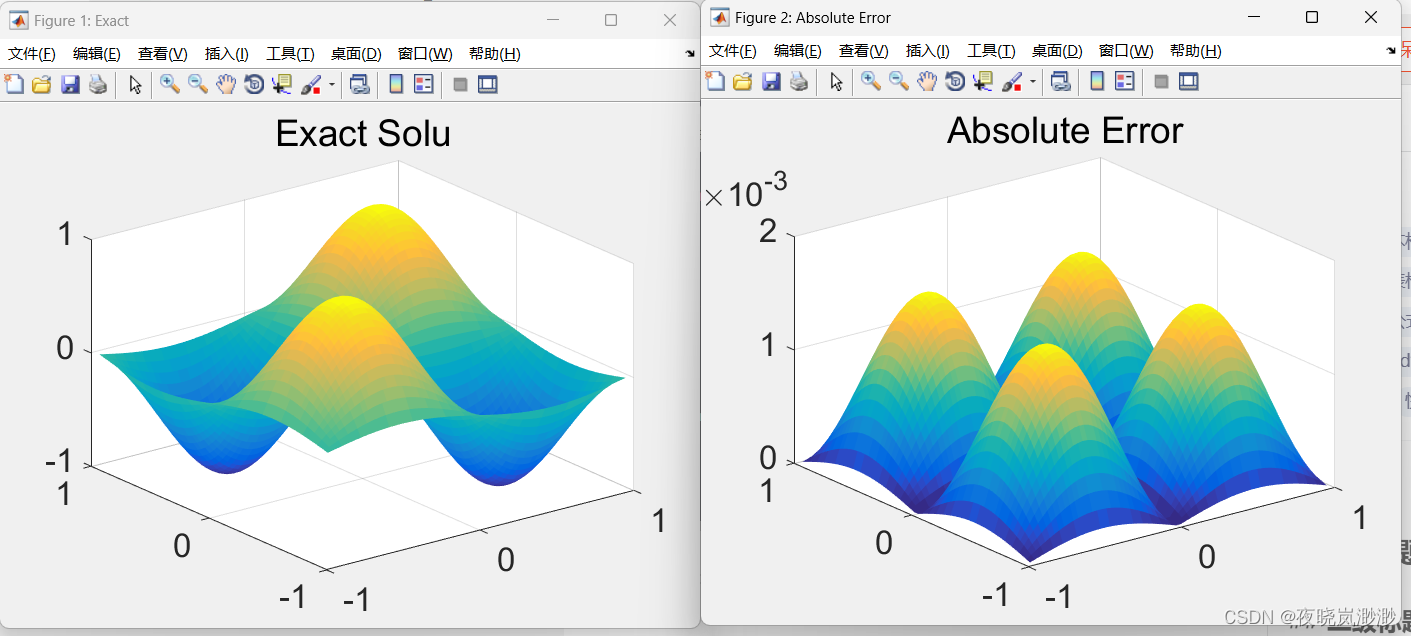

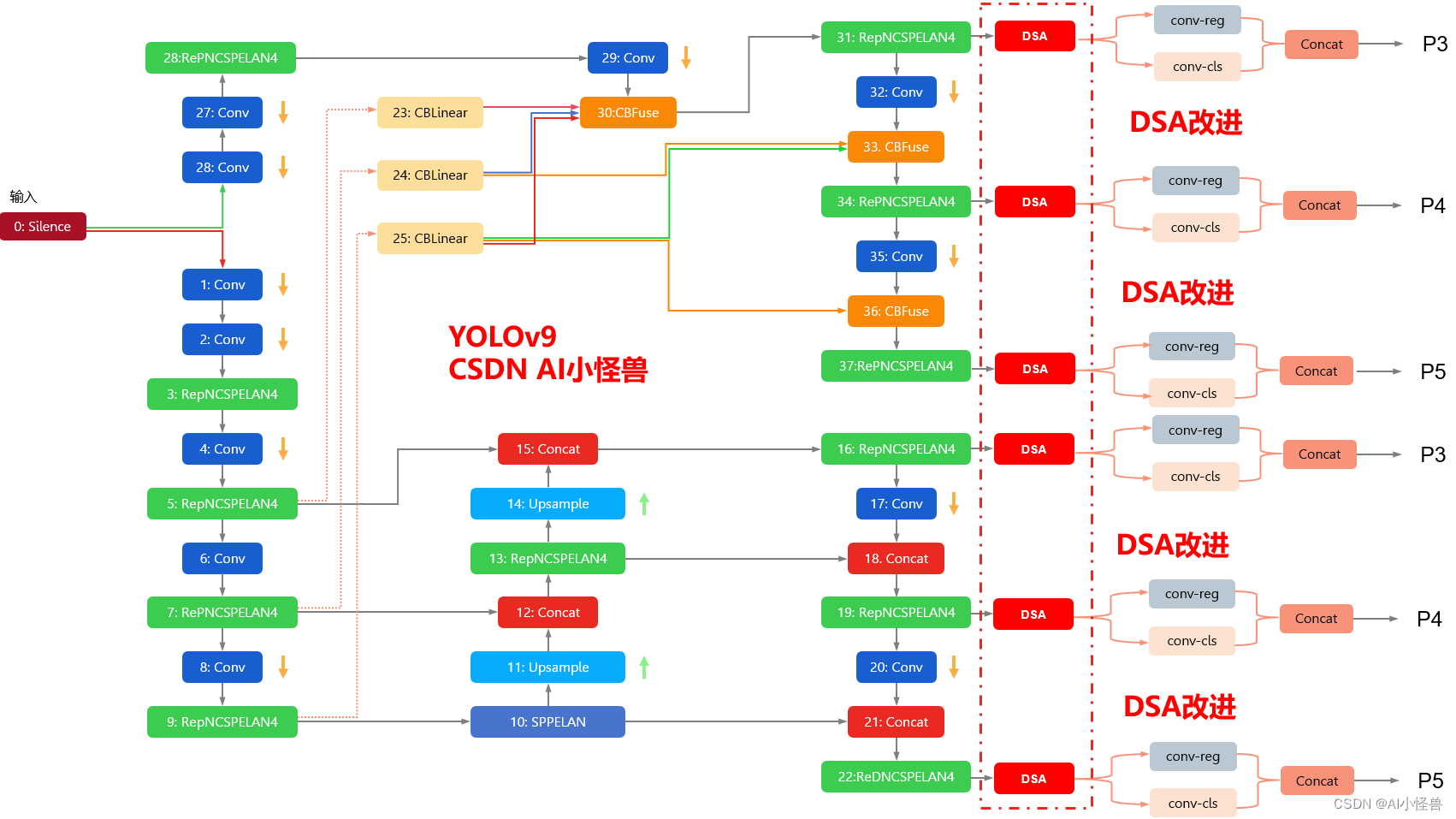

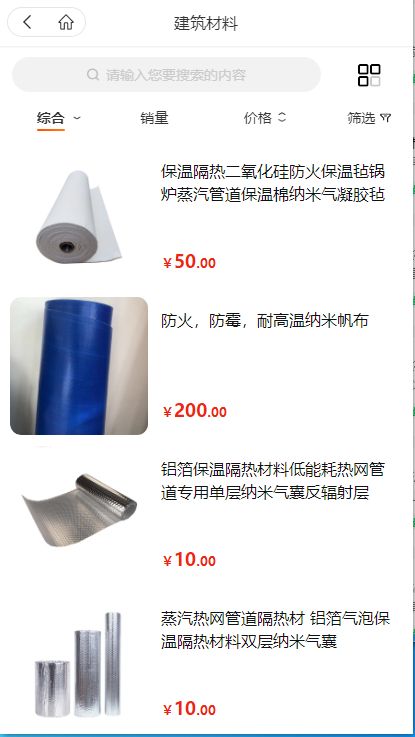




![[大模型]ChatGLM3-6B Code Interpreter](https://img-blog.csdnimg.cn/direct/4536a1ed3c4b456d9f9d86adcbdeda9a.png#pic_center)


